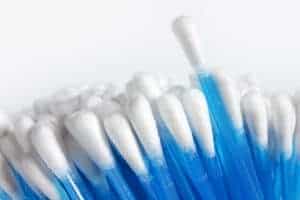Read Time: 7 Minutes
Don't put anything smaller than your elbow in your ears! It's great advice but we share tips on how to safety deal with earwax at home:
Ear wax. It’s something we don’t like to talk about, but it’s good to know that everyone has and it serves a very important purpose.
It is the body’s natural defense against ear canal infections. The production of acidic cerumen prevents infection by raising the pH of the ear canal, thereby making the environment less hospitable to bacterial and fungal overgrowth.
Ears are self-cleaning, which means that you shouldn’t need to do anymore than towel dry your outer ears dry after showering, bathing and swimming.
A surprising way your body uses to move ear wax is moving your jaw. So enjoy having a chat or chew some gum to give your jaw a work out and get that wax moving. Chewing sugarfree gum is shown to be good for your teeth too!
But some people are naturally prone to excessive wax build up for a number of reasons:
- narrow ear canals
- hairy ear canals
- overzealous cleaning with fingertips or cotton buds, which pushes wax further down the canals
- working in dusty or dirty environments
- inflammatory conditions of the skin or scalp.
So in answer to an email from one of our clients, we have some helpful and safe tips for dealing excess wax without harming your ears or your hearing.
Do
Use a soft washcloth to wipe your outer ears and then dry them as part of your daily care routine.
Use over the counter wax softener if needed. Value Hearing’s audiologists recommend two products based on the great results reported by our clients:
WaxSol: Its active ingredient is docusate sodium, a surfactant that allows water to target the source of the ear wax build up, helping to loosen the ear wax that has become hard. The manufacturers say that two night’s application may be enough to soften stubborn blockages.
EarClear: Its active ingredient is carbamide peroxide which uses an effervescent action to soften and disperse ear wax. The manufacturers say to use their product twice daily for up to four days if needed
You might even find a solution in your kitchen or bathroom cupboards.
Olive oil: Use three or drops of room temperature oil olive from a dropper. Lie down on your side with cotton wool ball in your ear to keep the oil in. Leave for 10 to 15 minutes. Stand over the sink to let the excess oil drain out from your ear canal. Use a small bulb syringe filled with warm water, flush out both the oil and wax from your ear canal and thoroughly dry.
The same method can be employed using Baby oil or even almond oil.
Don’t
Don't use cotton buds/cotton swabs/Q-Tips. We all know this, but many of us still do it anyway. While it might seem convenient, using them actually does more harm than good.
These devices end up impacting wax in the ear canal, and you may even harm your eardrum.
Don't Use Ear Candles. At best they’re a waste of money. At worse they may actually damage the ears. One research paper described the device as: “Ear candles: a triumph of ignorance over science.”
An article in American Family Physician describes the process and the risks:
In theory, the combination of heat and suction is supposed to remove earwax. However, in one trial, ear candles neither created suction nor removed wax and actually led to occlusion with candle wax in persons who previously had clean ear canals. Primary care physicians may see complications from ear candling including candle wax occlusion, local burns, and tympanic membrane perforation.
Don't use hydrogen peroxide. While some commercial solutions do contain hydrogen peroxide as an active ingredient, we would not recommend using it neat from the bottle. It may harm the skin and could accidentally reach your eyes if you’re not careful about how you use it.
A Word of Caution On Cleaning Your Ears
If you experience regular issues with blocked ears, our recommendation is to have a consultation with your GP.
This is because all the signs of ear wax blockage are also symptoms of other conditions:
- Earache
- Feeling of fullness in the affected ear
- Ringing or noises in the ear (tinnitus)
- Decreased hearing in the affected ear
- Dizziness
- Cough
And conversely, blocked ears may be caused by something other than wax build up - such as sinus conditions, severe colds, even altitude changes.
Impacted ear wax may hide serious issues such as a perforated eardrum, which makes removal a very precise job which should be done by a medical specialist.
As a result, we caution against using at-home devices such as syringes or ultrasonic to ‘do it yourself kits’ without first consulting your doctor or hearing specialist.
Further Reading
Value Hearing cares about you and your on-going hearing health. We have articles on other causes of hearing loss here.
- What Is Surfers Ear?
- What Is Meniere's Disease?
- What Is An Outer Ear Infection?
- How Noise Hurts Your Hearing (Even If You Can't Hear It)
- The Problem With Noise Needs To Be Out In The Open
- Ear Wax, Friend Or Foe?
- Health Issues That Affect Hearing
- How To Protect Your Hearing During Cold and Flu Season

